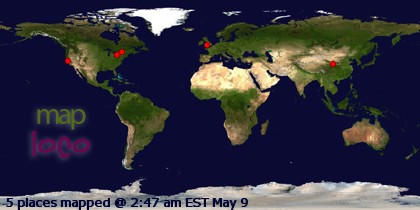I think the thing that most bothers me at the moment is how much people have got themselves into a flap about hikinuki/ukenagashi ni kaburi. The first thing to consider is that this isn't by any means all that new. Ishido Sensei first conveyed this small change to us at the Hagakure Iaido Seminar back in 2006 (I wrote an article on the seminar which can be found at http://www.daedalusdesign.co.uk/hosted/iaidojodo/articles/articles-hagakure06.htm). At that time it was clearly explained that it was absolutely necessary for the tsukagashira to be leading the upward movement into furikaburi and there was no necessity to keep the tip up during this process.
This principle still exists for all those movements where it is necessary to bring the sword up by going through ukenagashi (i.e. last cut of Morotezuki, cuts 2 & 3 of Sanpogiri, 2nd cut of Shihogiri).
Within one or at most two years, the principle of hikinuki was formalised into the Seitei system. This basically meant that a small drawing-out motion was necessary while bringing the sword up. It was pointed out quite clearly by Ishido Sensei that this drawing out was delivered by turning motions of the body along with a gently contraction of the arms. It has best been demonstrated with one person holding a saya in which the exponent's sword was inserted. From there on a movement, once again through ukenagashi, would lead into furikaburi.
I once asked the question, why go through ukenagashi, and both sensei's Ishido and Kishimoto both explained that it was the most efficient way of moving the sword. As an engineer I find this response to be reasonable and logical. Furthermore we have been urged to keep the sword as close and as aligned with the centre line as possible. Again this makes complete sense in keeping unnecessary movements to a minimum.

So what constitutes going through ukenagashi? Simply put, ensuring that the sword is slanting down from the tsukagashira means that this can be called ukenagashi ni kaburi. The amount of slant is a matter of taste and physical specifics but obviously too vertical would mean a lack of control over the sword, over horizontal and it is no longer ukenagashi.
Why am I posting this? I think perhaps due to the number of people that have thanked me for this blog during the Villingen seminar I thought I would try to give something back which was useful. I sincerely don't think that this ukenagashi/hikinuki thing is something which people need lose sleep about. If one tries to move the sword naturally, succumbing to it's natural inertia, the sword moves exactly as we are told to.
Anyway, perhaps it would be good to clarify these movements in their respective kata:
1. Tsukaate - after the rear thrust, the hikinuki is made naturally by turning back to face the front. By allowing the tsukagashira to be the leading part of the sword, hikinuki and ukenagashi is naturally performed.
2. Morotezuki - after the front thrust, the hands are slightly withdrawn towards the body as the turn is made. From thereon, leading with the tsukagashira produces the desired movement. After the first cut, the turn is made and the sword brought naturally above the head using the tsukagashira to lead the sword up.
3. Sanpogiri - After the first cut, as the body turns the sword is naturally rotated up once again using the tsukagashira as a lead. As the sword reaches its apex above the head, the te-no-uchi action can bring the kissaki up and over in a smooth motion to continue into the cut. The third cut is delivered again by moving the tsukagashira up as you move under and through the sword.
4. Ganmenate - After the rear thrust, use a similar motion to Morotezuki by gradually retracting the arm as it lifts the tsukagashira up over the head to cut (not forgetting to actuate the whole body one body width to the left).
5. Shihogiri - Like Tsukaate, the thrusted sword is gently retracted by both the hands and the turn of the body as the tsukagashira leads the sword above the head into the first cut. The second cut is performed the same way as the last cut in Sanpogiri.
I hope that more or less makes it clear. Again I don't think these aspects were introduced to trip people up; they are merely there to represent the most natural, efficient, smooth and realistic action of the sword.






No comments:
Post a Comment